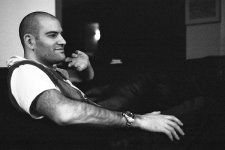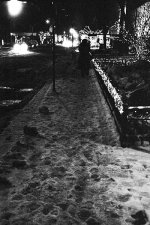Shoot while exhaling gently -- a trick I was taught many years ago, and MUCH more stable than holding your breath.
Slouch against a wall if you can, and don't hold the camera to your eye too long.
If you're not shooting immediately, hold it up; check the framing; pre-focus; then lower it again until just before you shoot.
1/focal length is a good rule of thumb, but the longer the lens, the more optimistic it becomes: I don't like to shoot a 200mm lens even at 1/250, and I prefer 1/1000. At the other end of the scale, I've successfully hand-held 21mm at 1/15 and even 1/8, and 15mm at 1/8 and even 1/4.
If you can sit or kneel down, brace your elbows on a table or wall, and rest the camera against your forehead, that can give you another step or two on the shutter speed dial.
Remember the variables. Are you tired or well-rested? Hungry/thirsty or well fed and watered? Calm or excited? Have you just been running...?
Finally, remember a simple truth. If you don't play, you can't win. Better to risk a blurred shot (you might get lucky) than not to shoot at all.
Cheers,
R.




